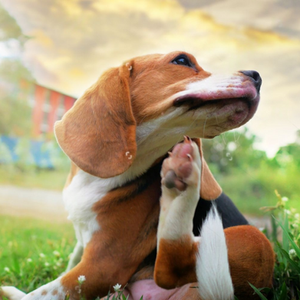Holistic Home Check: Preparing Your Dog’s Space for IBS Relief in July, Dog House Repair Month Meets Digestive Health
- Emanuela Visone
- Jul 18
- 3 min read

Did you know your dog’s environment could be making their IBS symptoms worse?
July is Dog House Repair Month—and while most people think of repairing leaky roofs or upgrading dog beds, here at DogIBS, we see it as the perfect time to create a healing home base for dogs with sensitive tummies. Because when it comes to gut health, what surrounds your dog matters just as much as what’s in their bowl.
If your pup struggles with chronic loose stools, inflammation, or anxiety around mealtime, it’s time to take a fresh look at their living environment. From calming zones to chemical-free fabrics, a few holistic upgrades can make a huge difference in your dog’s digestive relief.
🐶 Why Your Home Affects Your Dog’s Gut
Stress, toxins, and environmental irritants can directly impact the gut microbiome, immune response, and nervous system. In dogs with IBS, these triggers often show up as:
Sudden diarrhea or loose stools
Increased gas, bloating, or belly gurgling
Food avoidance or anxiety during meals
Skin flare-ups or obsessive licking
The good news? With a few gentle home adjustments, you can reduce those triggers—and create a safe, soothing space for healing.
🌬️ 1. Purify the Air, Naturally

Most dogs with IBS are also sensitive to indoor air quality. Chemical air fresheners, scented candles, and cleaning sprays can disrupt their nervous system and aggravate inflammation.
Try This:
Beeswax candles – These naturally purify the air by releasing negative ions, without synthetic fragrances.
Himalayan salt lamps – Help neutralize pollutants and reduce EMF exposure.
Indoor plants – Add aloe vera, bamboo palm, or spider plants to help filter the air (just keep out of chewing range).
DIY cleaners – Use vinegar + lemon essential oil instead of store-bought sprays.
🐾 Pro tip: Avoid plug-ins, Febreze, or bleach-based products around your dog’s bedding or food area.
🛏️ 2. Choose Non-Toxic, Supportive Bedding

Dogs with digestive sensitivity often also struggle with skin irritation, allergies, or overheating—which can affect sleep and healing.
Choose:
Organic cotton or bamboo bedding – Breathable, hypoallergenic, and chemical-free
Natural latex or orthopedic foam – Provides joint support without off-gassing toxins
Washable covers – Use unscented, natural detergent and wash weekly to remove allergens
Avoid memory foam beds treated with flame retardants or “cooling” gels, which can be harsh on your dog’s body.
🧘♂️ 3. Create a Calming Zone

A dedicated quiet space helps regulate your dog’s nervous system, which is directly connected to digestion through the gut-brain axis.
Stress = cortisol spikes = slower digestion = more IBS flares.
Calming Zone Ideas:
A dimly lit corner away from high-traffic areas
Include calming items like:
A beeswax candle or diffuser with lavender hydrosol
A weighted blanket or light wrap
Familiar plush toy or chew
Gentle white noise or calming music during rest time
Bonus: Use this space during meals to reduce stress-related digestive upset.
🍃 4. Declutter & Detox Common Gut Triggers

Small changes in your dog’s surroundings can have a big impact on their gut.
Watch Out For:
Plastic bowls – Switch to stainless steel or ceramic to reduce BPA and phthalate exposure (both linked to endocrine disruption).
Synthetic rugs or sprays – Use natural fiber rugs and avoid Febreze or carpet deodorizers.
Treated wood crates or decks – These may off-gas or irritate paws and bellies.
🧼 5. Clean Eating Starts with a Clean Setup

Your dog’s feeding space should feel safe, clean, and peaceful—this helps signal to the body that it’s time to digest and relax.
Tips:
Keep food and water bowls away from litter boxes, garbage, or loud appliances.
Wipe bowls with warm water and vinegar—no harsh soaps.
Consider feeding in the calming zone if your dog seems anxious around food.
🔄 Don’t Forget: Gradual Transitions Are Key
If your dog is sensitive, sudden changes (even good ones!) can spike anxiety. Introduce updates slowly, one change every few days—and monitor their behavior and stool.
🌟 Final Thoughts: A Healing Home = A Healing Gut
When it comes to helping your dog with IBS, your home is more than a place to sleep—it’s part of the healing protocol. Small shifts like purifying the air, upgrading bedding, and creating a stress-free zone can have powerful ripple effects on digestion, mood, and overall vitality.
This Dog House Repair Month, go beyond patching up the crate—create a true sanctuary for your sensitive pup.
🐾 Want More Gut-Friendly Tips?
Book a personalized Gut Health Home Audit Session
Let’s rebuild your dog’s health—starting at home.








Comments